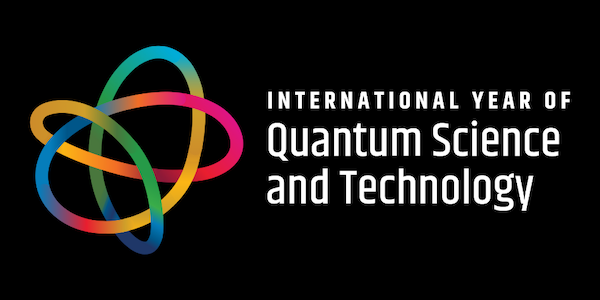Resources
Resources
LaserNetUS and Quantum: Making Strides in the Year of Quantum Science and Technology
Feb 26, 2025. News

On June 7, 2024, the United Nations (UN) proclaimed 2025 the International Year of Quantum Science and Technology (IYQ). This global initiative celebrates humankind’s remarkable progress in quantum science over the past century and highlights its essential role in sustainable development and worldwide communications. As we approach the 100th anniversary of modern quantum mechanics, IYQ seeks to raise awareness in quantum science. IYQ is broadly recognized across multiple U.S. government agencies, and the U.S. National Quantum Initiative offers a list of events, ways to engage, and learning resources.
LaserNetUS Contributions to Quantum Research
Playing a role in the quantum revolution is LaserNetUS, a pioneering network of high-energy laser facilities across the United States. This includes the BELLA Center at Lawrence Berkeley National Laboratory and the Jupiter Laser Facility at Lawrence Livermore National Laboratory. These cutting-edge facilities are important in accelerating Quantum Information Science (QIS), utilizing novel laser techniques to explore atomic and subatomic realms.
Advancing Quantum Innovations
Researchers at LaserNetUS harness state-of-the-art laser technology to investigate and manipulate matter at the quantum level. Another key focus is the creation of color centers in silicon—microscopic defects that can serve as qubits, the fundamental building blocks of quantum computing. The ability to encode, transmit, and manipulate information at unprecedented speeds promises to spearhead breakthroughs in sectors like secure communications and advanced computing.
Thomas Schenkel, a Senior Scientist at Berkeley Lab and LaserNetUS Principal Investigator (PI) involved in QIS research, explains the importance of high-quality laser access: “Without a laser like the one at the BELLA Center, which can deliver petawatt-level pulses at repetition rates up to 1 Hz, it would not be possible to generate the range of ion pulses needed to form and place color centers accurately.”
The BELLA laser is also being considered for various applications, including inertial fusion energy, nuclear physics, and studying the effects of radiation on materials.
Supporting DOE Fusion Energy Sciences Goals
The work conducted at LaserNetUS aligns closely with the U.S. Department of Energy’s (DOE) Fusion Energy Sciences (FES) program. FES is dedicated to enhancing our understanding of matter under extreme conditions—knowledge that is foundational to both fusion research and quantum technologies. By providing leading-edge laser technology, LaserNetUS implements FES strategies, unlocking new applications in priority research areas.
The DOE’s recent funding initiative, awarding $11.4 million for QIS projects within the FES framework, underscores federal commitment to these interconnected fields. This funding strives to promote research that bridges quantum science with fusion energy, paving the way for groundbreaking achievements in energy production and exploring novel materials and phenomena.
Contributing to Sustainable Development
In line with the IYQ’s purpose, LaserNetUS researchers’ experiments and findings significantly increase our understanding of quantum phenomena while supporting broader sustainable development goals. By championing education and leadership in quantum technologies, LaserNetUS helps create a future where nations can benefit from ongoing transformations in energy, information exchange, and beyond.
The research initiatives at LaserNetUS facilitate scientific discovery and inspire collaboration and knowledge sharing across global communities. This focus on empowerment ensures that emerging scientists have access to the resources and training necessary to excel in the evolving landscape of quantum science.
Conclusion
As we move through 2025 and embrace the IYQ, LaserNetUS’s role becomes increasingly vital. By supporting the DOE FES program through modern laser technology, LaserNetUS promotes major developments in quantum information science. Together, these efforts promise a bold future where “quantum” leaps forward clear a path to sustainable energy solutions, enhanced communication networks, and transformative technologies that benefit societies the world over.
About LaserNetUS
Founded in 2018, LaserNetUS is a U.S. Department of Energy (DOE) Office of Science initiative providing scientists access to a network of high-power laser facilities across the U.S. The program fosters collaboration and supports cutting-edge research in plasma physics, materials science, and particle acceleration.
Media Contact:
Dr. Chandra Breanne Curry
LaserNetUS Coordinator
ccurry@slac.stanford.edu
More From News